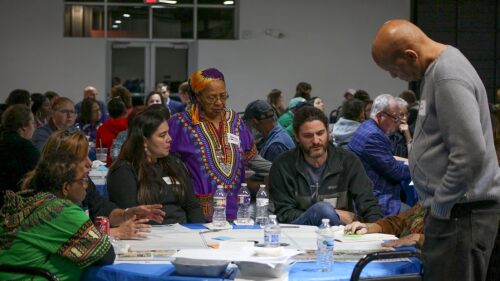Erie, Pennsylvania, is on the cusp of change and can be reimagined if the city embraces the land use, economic, and technological changes that are affecting growth there and in other cities in the Rust Belt, a new ULI report says. ULI’s recommendations follow a visit to Erie last year by a group of land use and urban development experts convened to advise the Erie Downtown Development Council (EDDC) on how best to revitalize the downtown core.
The panel was convened through ULI’s Advisory Services program, which for more than 70 years has gathered groups of ULI member experts to advise communities facing complex urban development challenges.
The panel said several principles should guide the city’s reinvention of the downtown area, including:
- Understanding the changes currently driving the economy in Erie and every other Rust Belt city;
- Cultivating a culture of inclusion, communication, and accountability for the public, private, and nonprofit sectors;
- Adopting a set of guiding principles for the redevelopment of downtown; and
- Identifying and engaging civic and private institutions to help make a reimagined Erie a reality.
Using these principles as a guide, the panel issued detailed recommendations regarding land use in the downtown core, including:
- Create an inventory of land assets, and streamline the process to convert the blighted and derelict properties into productive uses.
- Adopt a set of guiding principles for downtown development, including increasing the number of residences and providing ground-floor commercial development on commercial corridors.
- Redevelop the EDDC footprint with a variety of mixed-use projects while providing the capital to fund catalytic components of these projects.
- Create a Mayor’s Task Force to Reimagine Erie, as well as a new organizational structure in the city that includes strengthening the planning department.
- Enhance the city’s financial capacity to create public/private partnerships and identify internal and external funding sources.
The panel, sponsored by the EDDC, was chaired by leading ULI member Richard W. Reynolds, president of the Needham, Massachusetts–based Reynolds Group.
“The panel was impressed that the private and public leaders of Erie recognize the reality and seriousness of the issues facing the city given the structural changes in the regional and national economy,” Reynolds said. “Whether the city can adapt for success in the future lies in its ability and commitment to put in place the changes needed. Hopefully, the ULI recommendations will be helpful in getting that process underway.”
While ULI’s recommendations focus on Erie, they can be adapted to other Rust Belt areas hit hard by the decline of manufacturing. Over the past several years, ULI Advisory Services panels have assisted communities throughout the Rust Belt with revitalization strategies, including Detroit, Pittsburgh, Chicago, and Bloomington, Indiana.
“The strength of ULI’s Advisory Services program lies in ULI’s unique ability to draw upon the knowledge and expertise of its cross-disciplinary membership, which includes representatives from all aspects of the land use and real estate industry,” said W. Edward Walter, ULI global chief executive officer. “The independent views of the panelists bring a fresh perspective to urban development and growth challenges such as those faced by Erie. The program is all about offering creative, innovative approaches to community building.”
Reynolds was joined on the panel by Daniel Anderton, senior associate, community design and planning, Dewberry, Rockville, Maryland; Walter S. Bialas, vice president, real estate market research, Jones Lang LaSalle, Dallas; Lucia Garsys, chief administrator for development and infrastructure, Hillsborough County, Tampa; Stanley Lowe, president and chief executive officer, Pittsburgh Neighborhood Preservation Services, Pittsburgh; Tom Murphy, senior resident fellow/Klingbeil Family Chair for Urban Development, ULI, Washington, D.C./Pittsburgh; Nan Rohrer, independent consultant, Rohrer Advisors, Baltimore; and Stephen Leeper, president and chief executive officer, Cincinnati Center City Development Corporation, Cincinnati.
The Erie, Pa., report and others are available to ULI members in Knowledge Finder.




